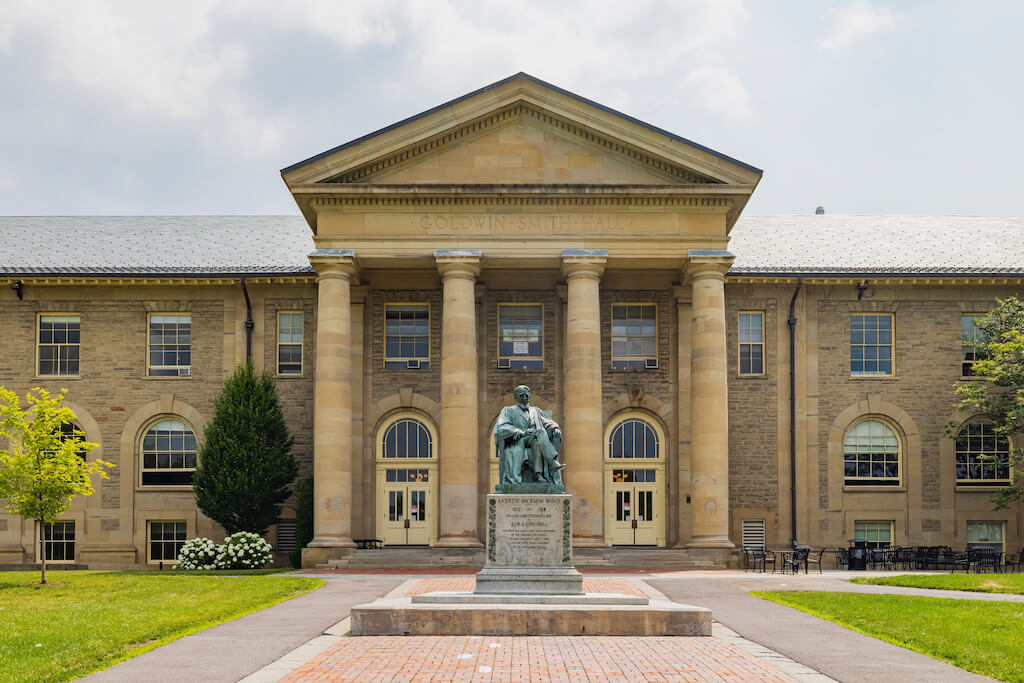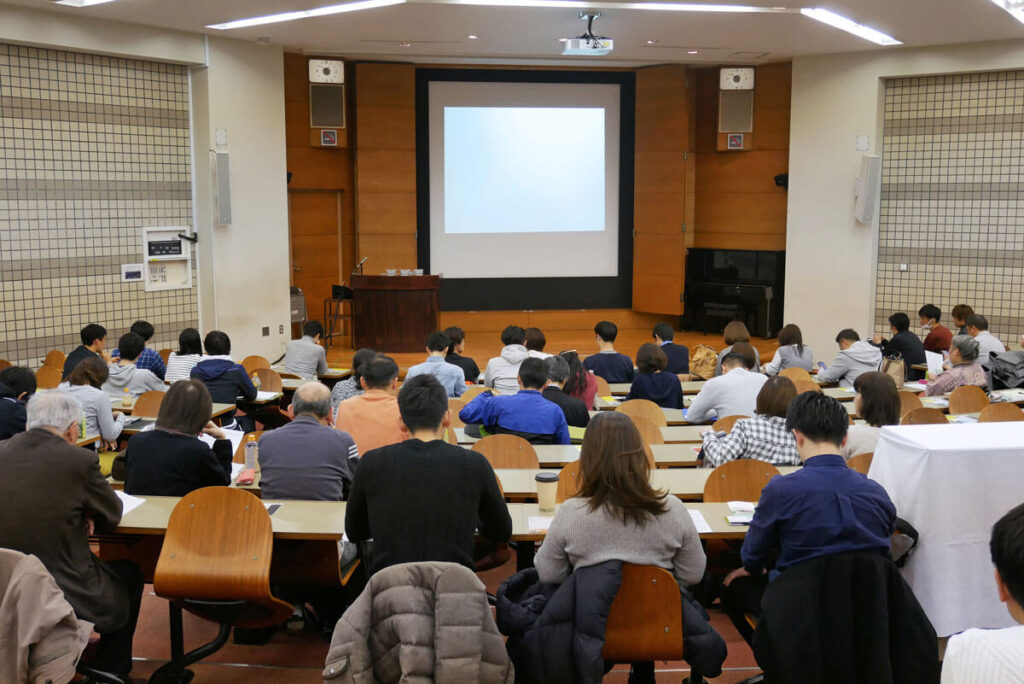It’s my guess that EDUCAUSE researchers Susan Grajek and Christopher Brooks purposely listed External Competition as the fourth Grand Challenge for higher education institutions to rise to overcome through a digital transformation. Understanding that the requirements for a digital transformation require digitization and digitalization as the first four steps is not enough, as they point out.
Step 5 requires transformation of the institutional operations, strategic directions, and value proposition through deep and coordinated shifts in culture, workforce, and technology. Sequentially, I think it’s appropriate to focus on Student Success, Financial Health, Reputation and Relevance, and not because they’re necessarily the easiest challenges to overcome through digital transformation.
Focusing on Student Success led American Public University System (APUS) to initiate changes that were different than many other adult-serving colleges and universities. We recognized that it was not always possible for our students to start a semester at one of the three traditional start times for the fall, spring, and summer terms, so we started semesters on the first Monday of every month.
We also recognized that not everyone had 16 weeks to complete a semester, so we added classes in shorter term lengths of 8 weeks. The online format offered a more attractive, affordable option in that there were no room and board and student activities fees charged.
At the same time, we recognized that the cost of textbooks meant that some students would delay ordering them while searching for a textbook to borrow or a used one to buy. We decided to provide textbooks to all undergrads through a textbook grant.
Doing that meant that all undergrads would have their textbooks at no cost to them at the beginning of the course, another chance to be more successful. Absorbing the costs of textbooks for all undergraduates incentivized APUS’s instructors and professors to find lower cost options through e-books and later, Open Educational Resources (OER).
As the number of students attending APUS grew, we knew that they were attracted to our affordable online model. We had to utilize technology appropriate in order to scale our non-teaching support functions, so that we could meet the needs of our students within a 24-hour time period as well as make sure that tuition increases were not needed because of increases in staff. Finding ways to accomplish those goals required an operational focus that became a cultural focus because of our mission of offering an affordable education.
Building online degrees that were relevant was particularly important to AMU/APUS in its early days when its accreditation status required that all students pay cash for their courses. The outcome was successful, and more programs were added that were relevant to the active-duty soldiers, sailors, airmen, and marines that were served.
In addition to building relevant courses and degrees, AMU/APUS recognized that it was important to recognize the training provided by the employer (in this case, the Army, Navy, Air Force, Marines, and Coast Guard) and accept credit for some of that training. While it diminished the net tuition received from each student, it decreased their time to completion as well as their employers’ expenses toward their education.
Relevancy increased the number of students enrolling, which increased AMU/APUS’s financial health. Having additional financial resources enabled AMU/APUS to undertake initiatives that improved its reputation.
In 2017, APUS was approved for its first doctoral programs in Strategic Intelligence and Global Security. The programs are very relevant to APUS’s students, and they are the first of their kind in their fields. They are not likely to break even for years, but should enhance our relevance and our reputation. The fact that we can offer them online means that we can accept students who work and live around the world, practicing in a field where degrees in these topics matter.
Authors Grajek and Brooks introduce the topic of external competition by discussing the public’s dissatisfaction with traditional colleges and universities. They write that employers cannot hire college graduates with the skills that they require, so they are developing their own or partnering with training companies. According to Grajek and Brooks, students want to earn alternative credentials through means other than those offered by most colleges and universities.
As I reread the intro to the External Competition challenge, I thought it ironic that Grajek and Brooks wrote about the public’s dissatisfaction with “traditional” colleges and universities. In our case at APUS, we listened to our students, changed our terms and courses to meet their work and lifestyle needs, provided degree programs that were relevant to their existing careers as well as their future professional goals, and gave them the opportunity to complete these programs at a pace that worked for them, no matter where they were located in the world. But APUS and our students would be viewed as non-traditional, despite the fact that working adult students now outnumber “traditional” students in higher education.
Traditional colleges and universities should be concerned about external competition. For the last four to five years, the overall enrollments in colleges and universities in the U.S. have shrunk due to a decrease in the numbers of students graduating from high school.
Some colleges have tried to solve the problem by increasing the number of students receiving a merit scholarship or discount. In the 2017-2018 academic year, the national average discount rate surpassed 50 percent and is projected to continue to increase.
Providing more than half of your tuition in scholarships in order to attract students is not sustainable from a long-term economic perspective. APUS’s focus on its mission of affordability 20 years ago led us to not increase for our active-duty military undergraduate students since 2001 and to provide textbooks at no cost to students for all undergraduate students since then.
Colleges and universities that undergo the recommended process of a digital transformation have the opportunity to offer alternative credentials online that meet the needs of students that they may not presently serve. Assuming the college and university has the technology to offer online courses through a Learning Management System (LMS), the question that needs to be asked is: Do they have the strategy, workforce, and cultural awareness to implement programs that are offered in a different format and marketed to different students?
In the previous articles discussing the EDUCAUSE Grand Challenges, I have written about APUS’s successes incurred through digital innovations (vs. transformations). In the External Competition category, our focus on student success and relevance has led us to an active student enrollment greater than 83,000.
At the same time, I think there are other ways that institutions can utilize a digital transformation to compete. Let’s start with one area. Years ago, we decided to offer monthly semester starts at APUS, because our working adult students wanted to enroll in a class when it did not conflict with their employment obligations or family obligations.
Most traditional institutions are offering online courses that align with their semester offerings for on-campus students. While campus course offerings are limited by the physical classrooms available, online courses are only limited by the availability of qualified faculty to teach the course.
Learning Management System software can generally host an unlimited number of online courses at the same time. Traditional universities need to consider thinking outside the box and offering courses when students are available to take them.
Traditional colleges and universities have not been shy about hiring part-time or adjunct faculty over the years. As they examine the potential solutions to address the Grand Challenge for External Competition, they should also look outside the box for solutions to improve the relevancy of their programs or even for solutions to add alternative credentials outside of their existing degree programs.
Over the years, the number of faculty knowledgeable about teaching online have increased. A college or university should no longer worry about not being able to find a qualified faculty member who is geographically located near their campus if the course is offered online. Our APUS campus is located in one of the smallest population states (West Virginia), yet we are able to find and hire qualified faculty members from all 50 states and even some outside of the U.S.
As colleges and universities consider the External Competition Grand Challenge, they should also reconsider how they recruit new students. While there are tried-and-true mailing lists available for high school juniors and seniors who can be mailed the traditional (and expensive) college viewbook, non-traditional students interested in online programs are not likely to be on a single large mailing list that can be utilized. Although there are companies that are known as lead aggregators who forward email addresses and contact information to colleges who agree to purchase it, APUS has not utilized lead aggregators over the years.
Instead, we’ve built our university website to have its content available for the internet search engines that prospective students use to find programs and schools that they’re interested in. Our highly relevant degree programs have content in course descriptions that matches up with search terms that someone may use in order to find the most relevant programs available.
Relevant content is critical for organic (versus paid) internet searches. Colleges and universities have a huge repository of content between their course materials and research generated by faculty and students.
At the same time, many colleges and universities may not have digitized the content in a manner that it is available to internet search engines. Because of our mission of affordability, APUS has tracked how our students find out about us. APUS has a large number of students referred to us by existing students or alumni, which keeps our marketing costs down.
We also attract students through our organic content. There is a cost to prepare that content as well as to publish it on the internet in a format that is absorbed by the search engines and available for prospective students to find.
In addition to being used for course instruction and marketing, institutional content can also be positioned to improve the institution’s reputation. With more than 1,500 courses offered online with 120 degree programs and a similar number of certificates, APUS has a lot of instructional content and assessments.
In the past, this information has been contained in the Learning Management System (LMS) without the ability to determine how much content or how many assessments are covering similar material. APUS is currently converting all of its online courses to a new LMS.
As part of the planning for that conversion, the new LMS is integrated with a Learning Content Management System (LCMS). Course materials and assessments from all courses will be loaded in the LCMS and searchable through an ontology developed by our provost’s office.
This technology will enable APUS to quickly build custom micro-credentials to respond to student market demand as well as to respond to companies that are looking for courses that can prepare their employees to improve their skillsets. APUS is fortunate that we have organized over the years to have our strategy, workforce, and culture aligned for continuous improvement and market readiness.
As I wrote at the beginning of this article, it appears that the EDUCAUSE Grand Challenge relating to External Competition was appropriately sequenced at number four in order. Based on my experiences at APUS, beginning a digital transformation and addressing the External Competition Challenge first would be a major mistake, particularly from a cost perspective.
The digitization and digitalization in the first four steps of the five-step sequence that Grajek and Brooks outlined as required for a transformation are particularly relevant and cost-effective for the previous three challenges. Once that work has been completed, it’s much less expensive and easier to think about ways to use technology as a tool for improving a college’s competitive structure.
Based on my experiences at APUS, there are many opportunities to improve competitiveness regardless how long a college has been utilizing technology to enhance your university or college’s programs. APUS’s strategy to add an LCMS to its technology platform in order to provide it with the ability to quickly customize courses utilizing existing course material and assessments is an example where an institution can leverage its competitiveness through technology.
I’m a proponent and believer in the potential of a digital transformation to address all of the Grand Challenges. APUS is an institution that has succeeded and grown through the application of technology to its mission, strategy, operations, and culture. It is important to understand that these structural components are just as important to the success as the technology.









